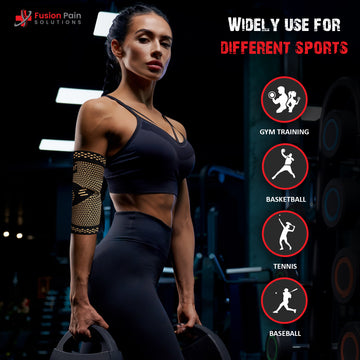








Red Light Infrared Therapy Massage Belt
Introducing the Fusion Pain Solution Red Light Infrared Massage Therapy Belt, the ultimate solution for all your muscle pain and discomfort! This innovative belt utilizes infrared technology to provide deep tissue massage therapy right at home.
The Infrared Massage Therapy Belt penetrates deep into your muscles, providing fast and effective relief from pain and discomfort. The belt is designed with multiple massage modes and intensity levels, so you can customize your massage to your specific needs.
It's also portable and lightweight, making it easy to take with you wherever you go. Don't let muscle pain and discomfort hold you back any longer!
Free Delivery & Guarantee Safe
Free shipping!
We want you to be 100% satisfied with your purchase. Items can be returned within 30 days of delivery.

Red Light Infrared Therapy Massage Belt
Introducing the Fusion Pain Solution Red Light Infrared Massage Therapy Belt, the ultimate solution for all your muscle pain and discomfort! This innovative belt utilizes infrared technology to provide deep tissue massage therapy right at home.
The Infrared Massage Therapy Belt penetrates deep into your muscles, providing fast and effective relief from pain and discomfort. The belt is designed with multiple massage modes and intensity levels, so you can customize your massage to your specific needs.
It's also portable and lightweight, making it easy to take with you wherever you go. Don't let muscle pain and discomfort hold you back any longer!
See it in Action. Fusion Pain Solutions.
Find more inspiration on our TikTok.





GOT QUESTIONS? WE'VE GOT ANSWERS
How Does The Infrared Red Light Therapy Work?
The infrared light penetrates deep into the muscles, improving circulation and reducing inflammation, which helps relieve pain and speed up recovery.
Can I Use The Massage Tool With Oils or Lotions?
Yes! It works great with or without massage oils or creams. Using oils can help reduce friction and enhance the massage experience.
Is The Back Stretcher Safe For Everyone?
Yes, but if you have severe spinal conditions, recent injuries, or chronic pain, consult your doctor before use. Beginners should start at Level 1 and gradually progress to higher levels.
What Sets Ropana Pain Relieving Cream Apart From Other Pain Relief Products?
Ropana Pain Relieving Cream stands out due to its unique blend of natural ingredients, including histamine, known for its anti-inflammatory properties, and MSM, renowned for supporting joint health. Additionally, the inclusion of arnica, magnesium, and turmeric further enhances its effectiveness in providing relief from muscle and joint pain.
How Long should I Use Neck Stretcher?
For best results, start with 5-10 minutes per session and gradually increase as your neck adapts. Avoid exceeding 20 minutes at a time to prevent overstretching.
Can I Wear Copper Braces All Day?
Yes! The breathable, moisture-wicking fabric ensures all-day comfort. However, if you experience discomfort or excessive tightness, take breaks as needed.
Is The Yoga Wheel Set Safe For Beginners?
Absolutely! The set is designed for all skill levels. Start with the larger wheel for support, and gradually work your way to the smaller wheels for deeper muscle release.
What Is Your Refund Policy?
We have a 30-day return policy, which means you have 30 days after receiving your item to request a return.
To be eligible for a return, your item must be in the same condition that you received it, unworn or unused, with tags, and in its original packaging. You’ll also need the receipt or proof of purchase.
To start a return, you can contact us at support@fusionpainsolutions.com. Please note that returns will need to be sent to the following address: 6688 Joliet Road #276, Indian Head Park, IL 60525
You can always contact us for any return questions at support@fusionpainsolutions.com
How Long Until I Receive My Order?
After you place your order, please allow 24-72 hours for it to be processed. Once your order has been processed, you’ll receive your order in 3-7 business days!













